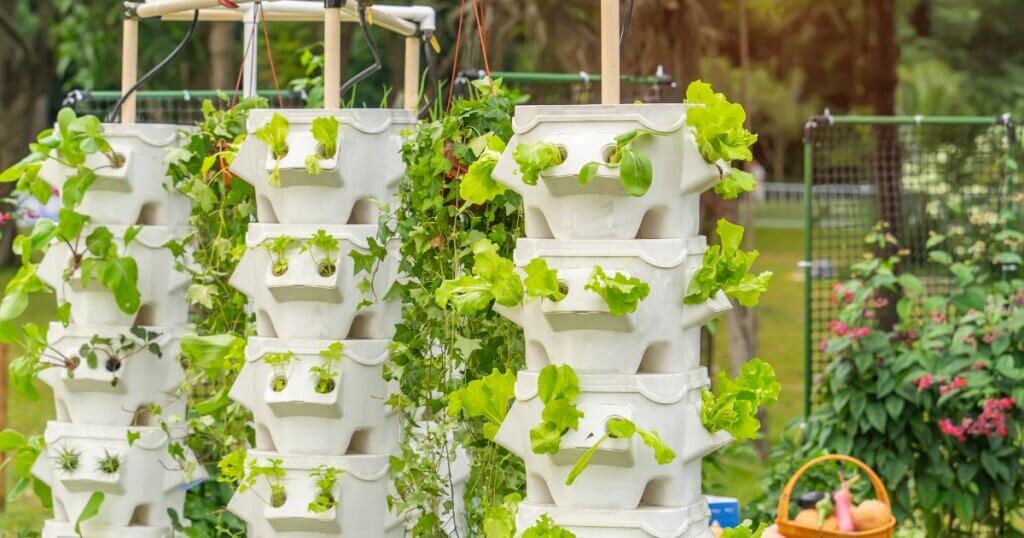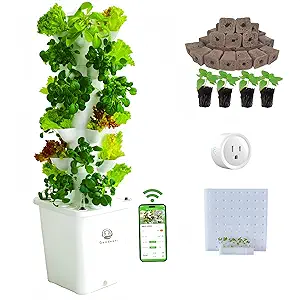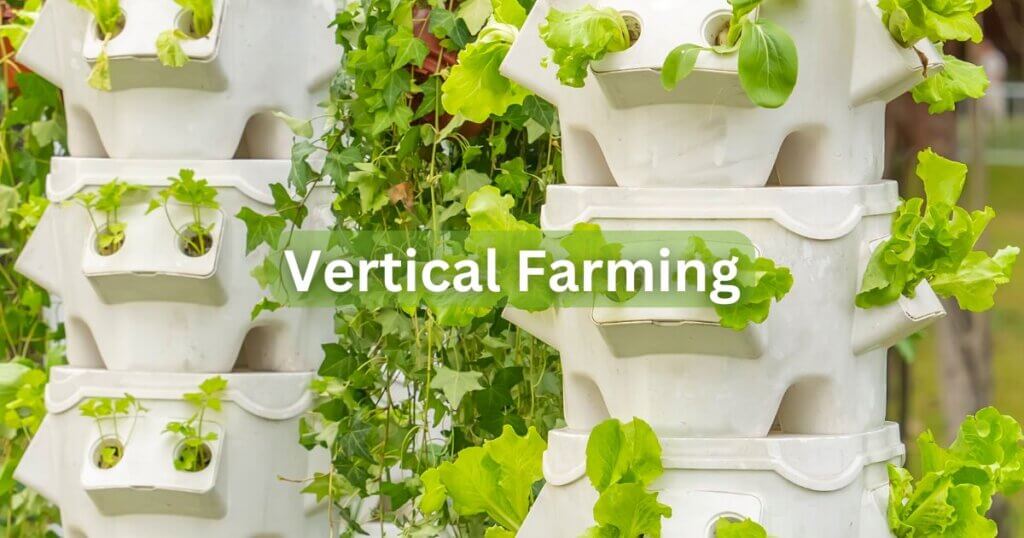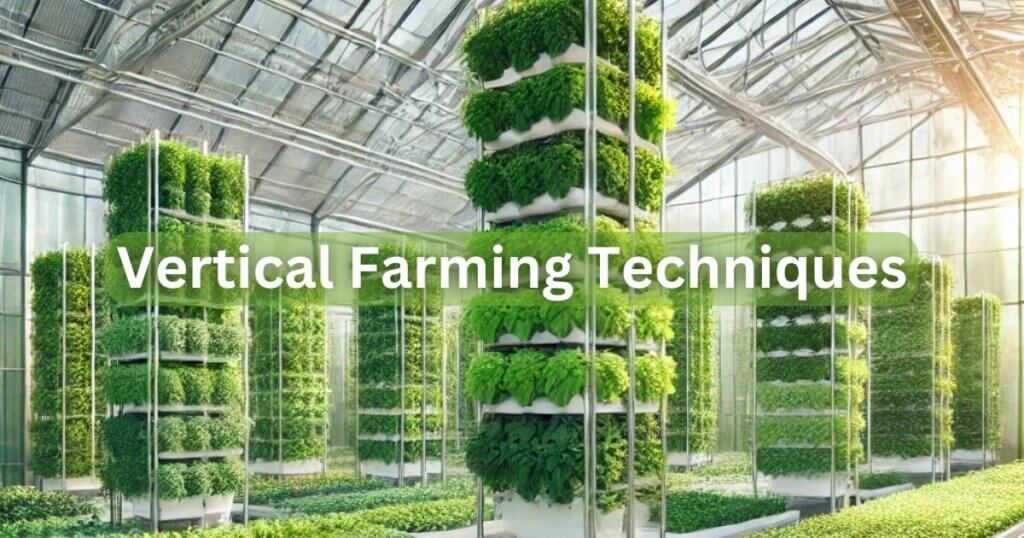Discover the Best Vertical Farming Systems

Welcome to the world of vertical farming systems, where innovation meets sustainability to revolutionize agriculture. This comprehensive guide will explore the benefits, technologies, and best practices associated with vertical farming systems. Discover how this cutting-edge approach to farming is reshaping the future of agriculture and addressing the challenges of food production in an increasingly urbanized world.
Table of Contents
The Rise of Vertical Farming
Understanding Vertical Farming Systems
Vertical farming is a groundbreaking method of cultivating crops in vertically stacked layers, maximizing land efficiency by utilizing indoor spaces. These systems leverage innovative technologies such as hydroponics, aeroponics, and aquaponics to provide optimal growing conditions for plants without traditional soil-based agriculture. Vertical farming systems optimize crop yields while conserving resources by controlling factors like temperature, light, and nutrient levels.
Advantages of Vertical Farming
Vertical farming systems offer numerous advantages over conventional farming methods. Let’s explore some of the key benefits:
- Year-Round Crop Production: Vertical farms are not restricted by seasonal variations or climate constraints, enabling year-round crop production regardless of external weather conditions.
- Space Efficiency: With crops grown in vertical stacks, vertical farming systems require significantly less land than traditional agriculture, making them ideal for urban areas with limited space.
- Water Conservation: Vertical farming uses up to 90% less water than traditional farming, as water is recirculated within closed-loop systems, minimizing wastage.
- Reduced Environmental Impact: Vertical farming systems help reduce pollution and soil degradation by eliminating the need for pesticides and herbicides, making them environmentally friendly.
- Increased Crop Yields: The controlled environment of vertical farms allows for optimized growth conditions, resulting in higher crop yields and more efficient use of resources.
Applications of Vertical Farming
Vertical farming systems have a wide range of applications across various sectors:
- Urban Agriculture: Vertical farms are particularly well-suited for urban environments where land availability is limited. These systems enable fresh produce to be grown locally, reducing transportation costs and carbon emissions.
- Food Security: Vertical farming can contribute to addressing food security challenges by providing a consistent and reliable supply of fresh produce, independent of external factors.
- Research and Development: Vertical farming serves as an excellent platform for experimentation and research into crop development, nutrition, and sustainable farming practices.
- Education: Vertical farming systems are increasingly used in educational settings to teach students about sustainable agriculture and the science behind plant growth.
Vertical Farming Technologies
Hydroponics: Cultivating Without Soil
Hydroponics is a popular technique used in vertical farming systems. It involves growing plants in nutrient-rich water without the use of soil. Hydroponics ensures plants receive optimal nutrition by delivering essential nutrients directly to the roots, promoting faster growth and higher yields.
Aeroponics: Harnessing the Power of Mist
Aeroponics takes vertical farming a step further by suspending plant roots in a nutrient-rich mist, allowing for efficient nutrient absorption. This technique promotes rapid growth and reduces water consumption, making it an ideal choice for resource-efficient vertical farming systems.
Aquaponics: The Perfect Balance of Fish and Plants
Aquaponics combines hydroponics with aquaculture, creating a symbiotic relationship between fish and plants. The fish waste provides nutrients for the plants, while the plants naturally filter the water for the fish. This closed-loop system is highly efficient and sustainable, making it an attractive choice for vertical farming enthusiasts.
Choosing the Right Vertical Farming System
Factors to Consider
Selecting the most suitable vertical farming system for your needs requires careful consideration of various factors:
- Available Space: Assess the available space and determine the size and capacity of the vertical farming system that fits within the constraints of your location.
- Crop Selection: Different crops have specific lighting, temperature, and humidity requirements. Choose a system that can accommodate the crops you wish to grow.
- Resource Efficiency: Evaluate the system’s energy consumption, water usage, and nutrient requirements to ensure optimal resource efficiency.
- Automation and Control: Consider the system’s level of automation and control. Advanced systems may include features like remote monitoring, automated nutrient delivery, and climate control.
For those looking to start with an all-in-one vertical farming system, the Vertical Hydroponics Indoor Growing System offers a compact, efficient solution that’s perfect for indoor environments.
3 Different Vertical Farming Systems and Their Characteristics
Regarding vertical farming systems, several options stand out for their innovative designs and advanced features. Let’s explore some of the top systems available on the market:
System A: Versatility and Automation
Key Features:
- Modular design that can be customized to fit various spaces.
- Advanced automation for precise control over environmental conditions.
- Remote monitoring capabilities for convenient management.
- Efficient use of resources, including water and energy.
System A is a versatile vertical farming system suitable for small-scale and large-scale operations. Its modular design allows growers to tailor the system to their space requirements. With advanced automation features like remote monitoring and control, growers can easily manage and optimize their crops’ growth conditions. System A’s resource efficiency ensures optimal crop yields while minimizing water and energy consumption.
System B: Compact and Smart
Key Features:
- Compact design ideal for urban farming.
- Easy setup and user-friendly interface.
- Smart sensors for real-time monitoring.
- Intuitive software for remote crop management.
Designed with urban farming in mind, System B offers a compact solution that fits seamlessly into limited spaces. Its user-friendly setup and intuitive interface make it accessible to beginners and experienced growers alike. System B incorporates smart sensors that continuously monitor essential environmental parameters, providing real-time data for crop management. With the accompanying intuitive software, growers can remotely monitor and adjust the system to ensure optimal plant growth and productivity.
System C: Scalable and Commercial-Grade
Key Features:
- Scalable design for large-scale vertical farming operations.
- Advanced hydroponic technology for optimized crop yields.
- Efficient use of space to maximize production capacity.
- Robust infrastructure and automation for commercial applications.
System C is designed for commercial applications, offering scalability and high productivity. Its scalable design allows for the expansion of operations as the demand for crops increases. With advanced hydroponic technology, System C ensures optimal nutrient delivery and efficient water usage, resulting in consistently high crop yields. The system maximizes space efficiency, making it ideal for large-scale vertical farming operations. With its robust infrastructure and automation features, System C streamlines the cultivation process and ensures reliable production for commercial growers.
Each of these vertical farming systems brings unique advantages and features. Consider your specific requirements, available space, and goals to choose the system that best suits your needs. By adopting one of these cutting-edge systems, you can unlock the full potential of vertical farming and contribute to sustainable agriculture.
Best Practices for Vertical Farming Success
Lighting: Illuminating Growth
Proper lighting is crucial for successful vertical farming. Here are some best practices to consider:
- LED Lights: LED lights are highly efficient and emit specific wavelengths that promote plant growth. Use a combination of blue and red LED lights to support photosynthesis and optimize growth.
- Light Intensity and Duration: Adjust the light intensity and duration based on the crop’s requirements. Different plants have varying light needs at different growth stages.
- Light Distribution: Ensure uniform light distribution across all plant layers by strategically positioning the lights at appropriate distances.
For optimal plant growth, consider using a high-efficiency LED like the Spider Farmer SF1000 LED Grow Light, which provides a full spectrum of light while being energy-efficient — perfect for vertical farming systems.
Nutrient Management: Feeding the Crops
Maintaining the right nutrient balance is essential for healthy plant growth. Follow these guidelines:
- pH Monitoring: Regularly monitor and adjust the pH level of the nutrient solution to ensure optimal nutrient uptake by plants.
- Nutrient Solution Composition: Prepare nutrient solutions with the appropriate balance of essential macronutrients and micronutrients based on crop requirements.
- Nutrient Delivery: Utilize automated systems for precise nutrient delivery, ensuring plants receive the required nutrients at the right time and in the correct amounts.
Using a complete nutrient system like the General Hydroponics Flora Series ensures your plants receive a balanced diet at every growth stage.
“A reliable pH meter like the VIVOSUN pH and TDS Meter Combo makes it easy to monitor nutrient solutions and ensure your crops are getting exactly what they need.”
Environmental Control: Creating the Perfect Climate
Creating an optimal growing environment is crucial for vertical farming success. Consider these factors:
- Temperature Control: Maintain a consistent temperature range based on crop requirements, providing a balance between growth and energy efficiency.
- Humidity Management: Monitor and regulate humidity levels to prevent the development of mold or fungal diseases. Different crops have varying humidity preferences.
- Ventilation: Ensure proper airflow within the vertical farming system to prevent heat buildup and maintain a fresh environment for healthy plant growth.
Conclusion
Vertical farming systems have emerged as a transformative solution to address the challenges of conventional agriculture. By harnessing the power of technology, these systems enable efficient, sustainable, and year-round crop production, regardless of location or climate. The benefits of vertical farming, from space efficiency to reduced environmental impact, make it a viable and promising option for the future of agriculture. Embrace this innovative approach to farming and unlock the potential of vertical farming systems to cultivate a greener, more sustainable world.
FAQs – Vertical Farming Systems
1. How much does it cost to start a vertical farm?
The cost of starting a vertical farm varies depending on the scale, technology, and location. Small-scale setups can cost a few thousand dollars, while large commercial farms can require millions in investment due to advanced automation, climate control, and LED lighting systems.
2. Can vertical farming replace traditional agriculture?
While vertical farming is a promising solution for urban food production and resource conservation, it is unlikely to replace traditional agriculture entirely. It is best suited for high-value crops like leafy greens and herbs, while staple crops like wheat, rice, and corn still rely on large-scale traditional farming.
3. What role do AI and automation play in vertical farming?
AI and automation help optimize vertical farming by monitoring plant health, adjusting lighting, temperature, and humidity, and automating nutrient delivery. These technologies improve efficiency, reduce human labor, and enhance crop yields.
4. Are vertical farming products more expensive than traditionally grown produce?
Initially, vertical farming produce can be more expensive due to high operational costs. However, as technology advances and economies of scale improve, prices are becoming more competitive, especially in urban areas where transportation costs for traditional produce are high.
5. What is the future of vertical farming?
The future of vertical farming includes advancements in renewable energy integration, AI-driven farming, and more affordable, scalable systems. As technology improves, vertical farming will likely expand to more regions, contributing to food security and sustainable agriculture.
Other Useful Resources Related To Vertical Farming Systems
- The Guardian: An article discussing how vertical farming is saving space, water, and emissions.
- The Growcer: A comprehensive list of vertical farming facts for 2024, covering trends, statistics, and impacts.
- World Economic Forum: An exploration of whether vertical farming should reposition to boost production, addressing challenges and future directions.
- iFarm: An overview of vertical farming technologies, including hydroponics and automation systems.
- AgriTechTomorrow: An article on how vertical farming technologies are turning deserts into fresh food hubs.






